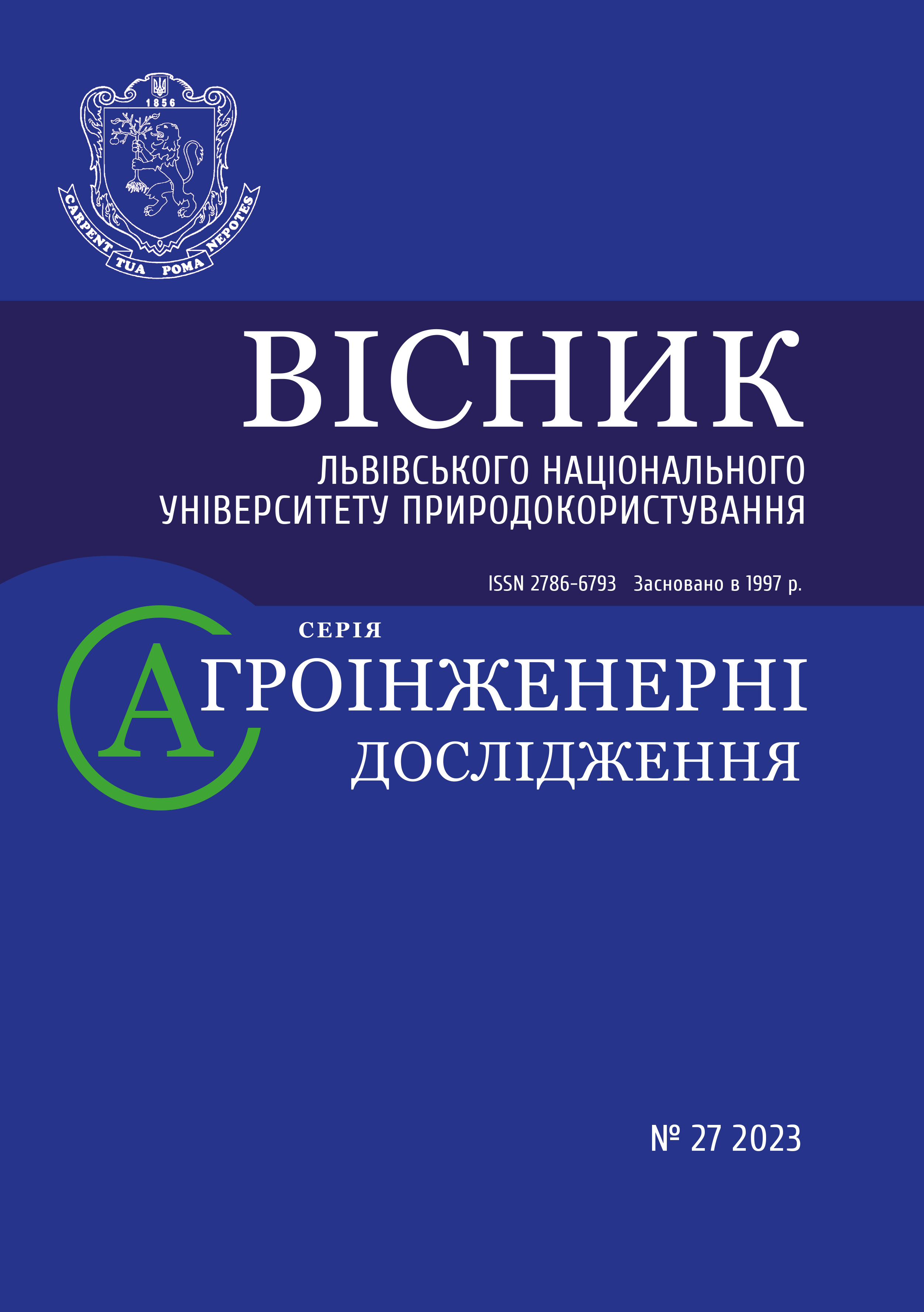Justification of the method of controlling the manipulator installations of trucks
DOI:
https://doi.org/10.31734/agroengineering2023.27.035Keywords:
manipulator crane, hydraulic drive, servo drive, electronic control systemAbstract
Transportation often requires loading and unloading cargo in areas beyond fixed warehouses, such as the field. To meet these needs, trucks equipped with manipulators are typically utilized. Hydraulic drives are commonly used in these manipulators, as they provide sufficient power and performance and can be easily integrated into a car's standard hydraulic system.
To substantiate the effective control system of the manipulator's hydraulic drive, a model of the truck's side was developed, consisting of an on-board platform; rotary module, power part (arrow, beam), hydraulic drive, electrical part (drive, control), and cargo lifter with servo drive.
A rational model of the electronic hydraulic drive control system of a manipulator crane for use in universal crane-manipulator installations on an automobile, self-propelled, and trailer chassis is proposed. This helps to increase the efficiency of loading and unloading operations while reducing the number of equipment and workers involved in cargo handling outside warehouses.
The authors propose an architecture of control of manipulator installations with a low cost of its implementation and a simple, understandable setting. The use of the proposed technology and electronic control scheme provides control of a complex system of drives, and allows for flexible settings according to the user's needs, e.g. to control the manipulator crane remotely via a radio channel or limit the amount of movement in certain directions.
To control the executive mechanisms of the manipulator crane, a hardware-computing platform with an Ardiuno microcontroller was used with the Processing/Wiring software development environment in the programming language, which is a subset of C/C++ and ensures: uninterrupted operation of the mechanisms during operation; their start and braking; informativeness, accuracy, and efficiency of mechanisms; minimal static and dynamic loads with reduced inertial action during cargo movement.
References
Antonelli, G. (2018). Underwater Robots. Switzerland: Springer Cham. [in English].
Aulin, V. V., & Velykodnyi, D. O. (2018). Methods for creating the transport-technological supply in AIC. Transport and logistics: problems and solutions: collection of scientific works and materials of the 8th International Scientific and Practical Conference. (May 23-25, 2018, Odesa), 15-17.
Bakai, B. Ya. (2011). Preliminary presentation of the equation of the manipulator dynamics by the Euler–Lagrange equation. Scientific bulletin of NLTU of Ukraine. Lviv: Published by NLTU Ukrainy, 21.18, 322–327.
Bozorg-Haddad, O., Solgi, M., & Loáiciga, H. (2017). Meta‐Heuristic and Evolutionary Algorithms for Engineering Optimization. Hoboke: John Wiley & Sons Inc. doi: 10.1002/9781119387053.
Buriennikov, Yu. A., Nemirovskyi, I. A., & Kozlov, L. H. (2013). Hydraulics, hydraulic and pneumatic drives: manual. Vinnytsia: VNTU, 2013.
Chander, A., Chatterjee, A., & Siarry, P. (2011). A New Social and Momentum Component Adaptive PSO Algorithm for Image Segmentation. Expert Systems with Applications, 38, 5, 4998-5004. doi: 10.1016/j.eswa.2010.09.151.
Greer, R., Haas, C., Gibson, G., Traver, A., & Tucker, R. L. (1997). Advances in Control Systems for Construction Manipulators. Automation in Construction, 6(3), 193-203.
Heo, J., Lee, K., & Garduno-Ramirez, R. (2006). Multiobjective Control of Power Plants Using Particle Swarm Optimization Techniques. IEEE Transactions on Energy Conversion, 21(10), 552-561. doi: 10.1109/TEC.2005.858078.
Kiranyaz, S., Ince, T., Yildirim, A., & Gabbouj, M. (2009). Evolutionary Artificial Neural Networks by Multi-Dimensional Particle Swarm Optimization. Neural Networks, 22(10), 1448-1462. doi: 10.1016/j.neunet.2009.05.013.
Lewis, F. L., Dawson, D. M., & Abdallah, C. T. (2004). Robot Manipulator Control Theory and Practice. New York: Marcel Dekker.
Loveikin, V., Romasevich, Y., & Spodoba, O. (2019). Mathematical model of the dynamics varying the radius jib system loader crane with a load at adjustment movement. Machinery & Energetics. Journal of Production Research, 10(1), 141-149.
Oliskevych, M., Kovalyshyn, S., Magats, M., Shevchuk, V., & Sukach, O. (2020). The optimization of trucks fleet schedule in view of their interaction and restrictions of the European agreement of work of crews. Transp. Probl., 15(2), 157–170.
Romasevych, Y., & Loveikin, V. (2018). A Novel Multi-Epoch Particle Swarm Optimization Technique. Cybernetics and Information Technologies, Bulgarian Academy of Sciences, 18, 3, 62-74.
Shramenko, N., Muzylyov, D., & Shramenko, V. (2020). Methodology of costs assessment for customer transportation service of small perishable cargoes. International Journal of Business Performance Management, 21(1-2), 132–148.
Zamani, M., Karimi-Ghartemani, M., Sadati, N., & Parniani, M. (2009). Design of a Fractional Order PID Controller for an AVR Using Particle Swarm Optimization. Control Engineering Practice, 17, 1380-1387.


